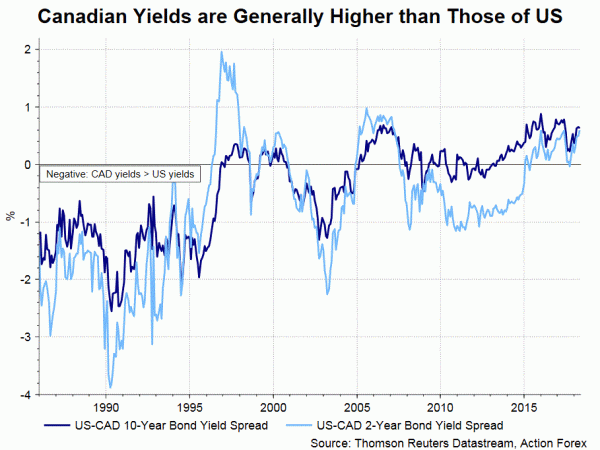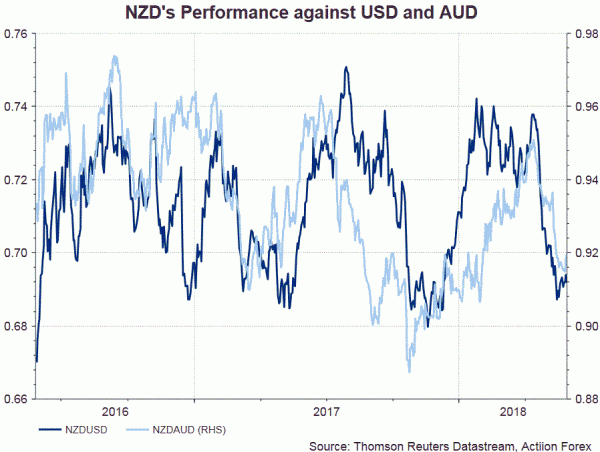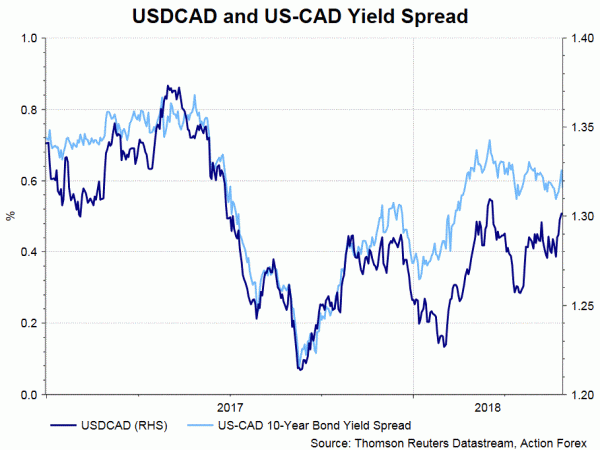In our report last week, we pointed out that monetary policy divergence between the Fed and other major central banks has re-emerged since April. While economic developments in the first several months of the year have reinforced FOMC’s commitment to continue gradual rate hike as planned, other major centrals are either keen on sticking to the accommodative monetary policies adopted in the aftermath of the global financial crisis or staying very cautious in implementation rate hike. This report seeks to analyze how the divergence has affected the movement of some traditional high-yield currencies.
Australia: RBA has kept the cash rate at a record low of 1.5% for almost 2 years. The market does not expect another rate hike until 2019. RBA’s minutes for the May meeting affirmed that it has no urgency to raise rates. The members acknowledged the economic growth momentum, expecting stronger growth “over the following couple of years” would “reduce spare capacity in the economy and lead to a further gradual decline in the unemployment rate”. However, they remained cautious over the pace of wages growth and inflation, forecasting both to only improve gradually as “spare capacity in the economy was expected to be reduced only slowly”. This assessment has direct impact on the monetary policy outlook. Noted explicitly, the RBA saw no “strong case for a near-term adjustment in monetary policy” as “as progress in lowering unemployment and having inflation return to the midpoint of the target range was expected to be gradual”.
Hailed as high-yield currency, Aussie had been a dominant player in carry trade, a strategy involving borrowing in a low-yielding currency to fund investments in higher-yielding assets elsewhere. Indeed, Australian yields have been above those of the US over the past four decades. The chart below shows that the only time that 10-year Australian yield trading below that of the US was during 4Q78- 3Q81 period, as well as some time in 2Q98. We notice that a similar trend re-emerged in February this year has been building up more sophisticatedly over the past two months. The direction of AUDUSD has a history of trading the yield differentials of the currency pair, despite derailment from time to time. AUDUSD rallied in January this year although AU-US yield differential has begun to fall. This was mainly driven by the broad-based weakness in the US dollar as the White House attempted to talk down the greenback, accompanied with less exciting economic dataflow. However, currency pair has reversed trend since February, displaying positive correlation with the deepening of negative yield differential between Australian and US bonds.
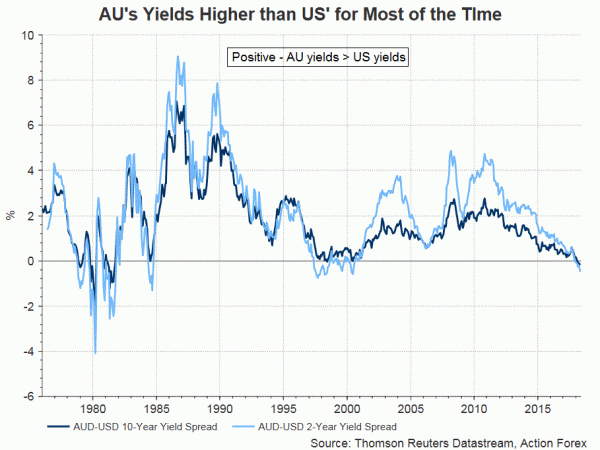
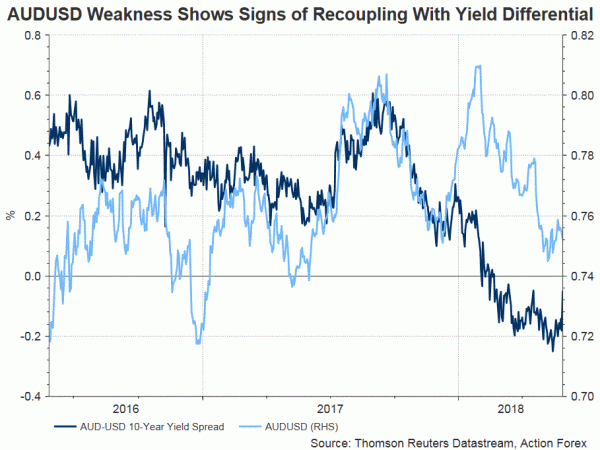
New Zealand: RBNZ’s monetary policy stood still in May with the OCR unchanged at 1.75%. The message delivered by the central bank came in slightly more dovish than expected. The central bank revised lower its inflation forecasts slight for coming quarters slightly, pushing backward the time that inflation would reach the +2% target to 4Q20, from 3Q20 prior. On the monetary policy outlook, RBNZ noted that interest rates would stay at “expansionary level for a considerable period of time”, in order to achieve the goal of maximum and sustainable employment, and low and stable inflation. The most dovish part of the message was that it indicated that “the direction of our next move is equally balanced, up or down”. This was compared with the March reference that “monetary policy remains easy in the advanced economies but is gradually becoming less stimulatory”.
From the perspective of yield differential, AUD has the capability to outperform NZD. Despite the lack of urgency to act, RBA continued to hold the view that “the next move in the cash rate will be up, not down”. This comes in contrast with RBNZ’s “balanced” view of future rate direction. Adding to the dovish hint, RBNZ discussed unconventional monetary policy at a bulletin article released on May 23. It indicated that the unconventional monetary policies adopted by some major central banks were “successful in easing financial conditions”. It added that there were “emerging research suggests they boosted inflation and activity”. Referring to RBNZ’s monetary policy, the central bank suggested that, with a policy rate at 1.75%, there is “significant further room to ease monetary policy in a conventional way, and conventional monetary policy remains effective in influencing inflation and activity”.
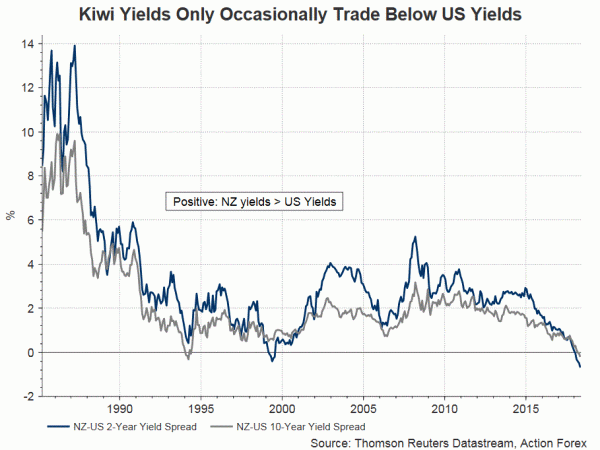
Canada: Following two rate hikes in 2017 and one more in January this year, BOC has kept its powder dry since then. Recently, the central bank has cautiously noted that future monetary policy change would be “guided by incoming data” and directed by the future of trade policy. In our preview for the May meeting, we noted that April’s inflation data was mixed, instead of dovish as some judged. First quarter growth report might show accelerating momentum of economic expansion. Although payrolls surprisingly contracted in the latest point, the unemployment rate has stayed at multi-decade low. The macroeconomic picture does not entirely go against rate hike. The Achilles heel is the highly uncertain outlook trade policy. US’ abrupt launch of national security investigation into car and truck imports is partly targeting NAFTA re-negotiation. The investigation might lead to new US tariffs similar to those imposed on imported steel and aluminum in March. The aim of this act is to threaten Canada and Mexico, pressuring them to make concessions in the new NAFTA.
